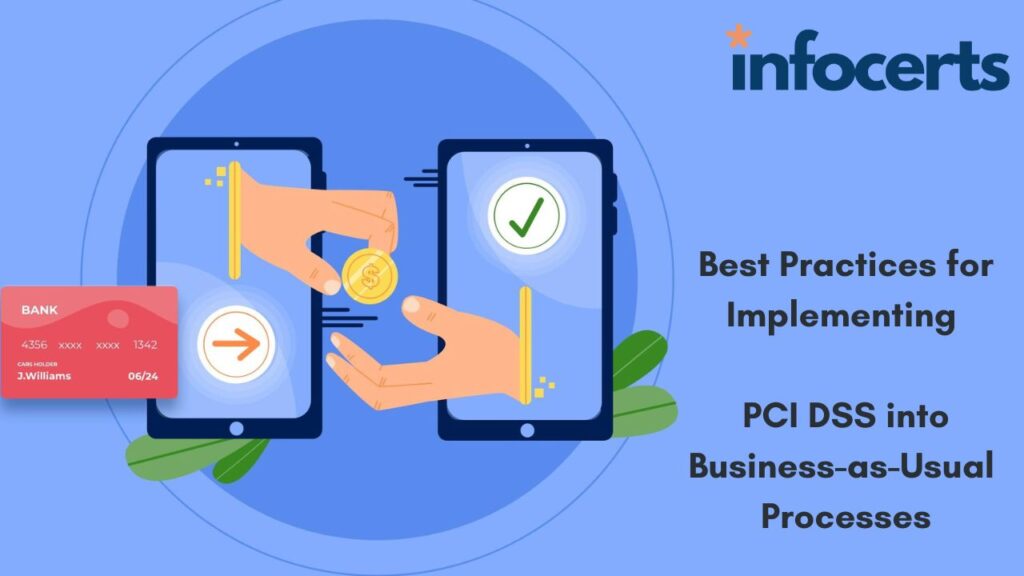Best Practices for Implementing PCI DSS An entity that implements business-as-usual processes, otherwise known as BAU, as part of their overall security strategy is taking measures to ensure that security controls that have been implemented to secure data and an environment continue to be implemented correctly and functioning properly as normal course of business.
Some PCI DSS requirements are intended to act as BAU processes by monitoring security controls to ensure their effectiveness on an ongoing basis. This oversight by the entity assists with providing reasonable assurance that the compliance of its environment is preserved between PCI DSS assessments. While there are currently some BAU requirements defined within the standard, an entity should adopt additional BAU processes specific to their organization and environment when possible. BAU processes are a way to verify that automated and manual controls are performing as expected. Regardless of whether a PCI DSS requirement is automated or manual, it is important for BAU processes to detect anomalies, and alert and report so that responsible individuals address the situation in a timely manner.
Examples of how PCI DSS should be incorporated into BAU activities include but are not limited to:
Assigning overall responsibility and accountability for PCI DSS compliance to an individual or team. This can include a charter defined by executive management for a specific PCI DSS compliance program and communication to executive management.
Developing performance metrics to measure the effectiveness of security initiatives and continuous monitoring of security controls, including those that are heavily relied upon, such as network security controls, intrusion-detection systems/intrusion-prevention systems (IDS/IPS), change-detection mechanisms, anti-malware solutions, and access controls, to ensure they are operating effectively and as intended.
Reviewing logged data more frequently to gain insights to trends or behaviors that may not be obvious with only monitoring.
Ensuring that all failures in security controls are detected and responded to promptly. Processes to respond to security control failures
should include:
– Restoring the security control.
– Identifying the cause of failure.
– Identifying and addressing any security issues that arose during the failure of the security control.
– Implementing mitigation, such as process or technical controls, to prevent the cause of the failure from recurring.
– Resuming monitoring of the security control, perhaps with enhanced monitoring for a period of time, to verify the control is operating effectively.
Reviewing changes that could introduce security risks to the environment (for example, addition of new systems, changes in system or network configurations) prior to completing the change, and including the following:
– Perform a risk assessment to determine the potential impact to PCI DSS scope (for example, a new network security control rule that permits connectivity between a system in the CDE and another system could bring additional systems or networks into scope for PCI DSS).
– Identify PCI DSS requirements applicable to systems and networks affected by the changes (for example, if a new system is in scope for PCI DSS, it would need to be configured per system configuration standards, including change-detection mechanisms, anti-malware software, patches, and audit logging. These new systems and networks would need to be added to the inventory of inscope system components and to the quarterly vulnerability scan schedule).
– Update PCI DSS scope and implement security controls as appropriate.
– Update documentation to reflect implemented changes.
Reviewing the impact to PCI DSS scope and requirements upon changes to organizational structure (for example, a company merger or acquisition).
Reviewing external connections and third-party access periodically.
For entities that use third parties for software development, periodically confirming that those software development activities continue to comply with software development requirements in Requirement 6.
Performing periodic reviews to confirm that PCI DSS requirements continue to be in place and personnel follow established processes. Periodic reviews should cover all facilities and locations, including retail outlets and data centers, whether self-managed or if a TPSP is used. For example, periodic reviews can be used to confirm that configuration standards have been applied to applicable systems, default vendor accounts and passwords are removed or disabled, patches and anti-malware solutions are up to date, audit logs are being reviewed, and so on. The frequency of periodic reviews should be determined by the entity as appropriate for the size and complexity of their environment, if not otherwise stated in PCI DSS.
These reviews can also be used to verify that required evidence for a PCI DSS assessment is being maintained. For example, evidence of audit logs, vulnerability scan reports, and reviews of network security control rulesets are necessary to assist the entity in preparing for its next PCI DSS assessment.
Establishing communication with all impacted parties, both external and internal, about newly identified threats and changes to the organization structure. Communication materials should help recipients understand the impact of threats, mitigating steps, and contact points for further information or escalation.
Reviewing hardware and software technologies at least once every 12 months to confirm that they continue to be supported by the vendor and can meet the entity’s security requirements, including PCI DSS. If technologies are no longer supported by the vendor or cannot meet the entity’s security needs, the entity should prepare a remediation plan, including replacement of the technology, as necessary.

